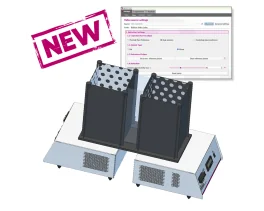Authors
E. Fride, H. Braun, H. Matan, S. Steinberg, P. H. Reggio et al.
Lab
Ariel University Center of Samaria, Departments of Behavioral Sciences and Molecular Biology, Ariel, Israel ; Research Triangle Institute, Center for Organic and Medicinal Chemistry, Greensboro, North Carolina, United States of America.
Journal
Pediatric Research
Abstract
We have shown previously that neonatal exposure to the cannabinoid CB1 receptor antagonist/inverse agonist rimonabant (SR141716) interfered with suckling and development. However, it was not clear whether the developmental deficiencies were induced by neutral CB1 receptor blockade, thereby inhibiting endogenous cannabinoid “tone,” or by inverse agonist reduction of constitutive CB1 receptors. CB1 receptor blockade supports our hypothesis that low CB1 receptor concentrations and/or reduced endocannabinoid levels underlie infant nonorganic failure to thrive (NOFTT). Inverse agonism implies that lower constitutive CB1 receptor activity may be responsible for impaired food intake in newborns. In the present study, we injected the neutral CB1 receptor antagonist 5-(4-chlorophenyl)-3-[(E)-2-cyclohexylethenyl]-1-(2,4-dichlorophenyl)-4-methyl-1H-pyrazole (VCHSR1) to 1-d-old mouse pups and recorded weight gain, gastric milk contents (milkbands), axillary temperature, and survival between age 1 and 10 d. The results showed a dose-related interference with all measures. These data show that (1) growth failure induced by rimonabant is generalized to another CB1 antagonist and (2) cannabinoid CB1 receptor activation by endocannabinoids is essential for normal milk ingestion and development in mice. This supports our hypothesis that endocannabinoid deficiency and perhaps CB1 receptor dysfunction represents the uncharacterized biologic vulnerability, which underlies NOFTT.
Source :

 Pain - Thermal Allodynia / Hyperalgesia
Pain - Thermal Allodynia / Hyperalgesia Pain - Spontaneous Pain - Postural Deficit
Pain - Spontaneous Pain - Postural Deficit Pain - Mechanical Allodynia / Hyperalgesia
Pain - Mechanical Allodynia / Hyperalgesia Learning/Memory - Attention - Addiction
Learning/Memory - Attention - Addiction Physiology & Respiratory Research
Physiology & Respiratory Research











![Dynamic Weight Bearing 2.0 – Postural Module [Add-on]](https://bioseb.com/733-home_default/dynamic-weight-bearing-20-add-on-postural-module.jpg)
























 Pain
Pain Central Nervous System (CNS)
Central Nervous System (CNS) Neurodegeneration
Neurodegeneration Sensory system
Sensory system Motor control
Motor control Mood Disorders
Mood Disorders Other disorders
Other disorders Muscular system
Muscular system Joints
Joints Metabolism
Metabolism Cross-disciplinary subjects
Cross-disciplinary subjects CONFERENCES & MEETINGS
CONFERENCES & MEETINGS